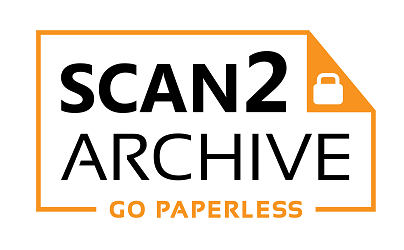SCANNING: THE BEST WAY TO PRESERVE MICROFILM AND MICROFICHE RECORDS
The widespread use of microfilm and microfiche started at the beginning of the 20th century and was a preferred archival media before the advent of the digital age. The ability to store multiple pages in miniaturised-form made microfilm and microfiche a good choice for architectural offices, land developers, hospitals, accountancy firms and other businesses that generated numerous paper records. The need to archive the reams of paper records in a smaller form factor drove the adoption of microfilm and microfiche.
TRADITIONAL MICROFICHE AND MICROFILM PRESERVATION
As with most analog storage media, microfilm and microfiche can degrade over time. Long term preservation of microfilm and fiche requires costly storage and proper handling techniques. For example, reference copies of film and microfiche should be stored in a clean, dark, climate-controlled environment, preferably between 18 and 22 degrees Celsius.
The room’s relative humidity should also remain between 45 and 55. Since they’re sensitive to extended exposure to light, microfilm and fiche should be returned to its storage packaging immediately after use.
Additionally, special considerations need to be made based on the material your microfiche and microfilm were produced on. Microfilm produced before 1990 was generally acetate-based film and more susceptible to decay especially if stored and handled incorrectly. Acetate-based films and fiche emit a sour odour known as ‘the vinegar syndrome’ as they decay and deteriorate.
If not identified and digitised early enough, this vinegar syndrome can spread to other film rolls and ultimately render the images on the film illegible and unreadable. The film may also become brittle as the emulsion and film base separate over time. Finally, the film has a tendency to stick together in its rolled state inside the storage cartridge or on the reel.
MICROFICHE AND MICROFILM DIGITISATION
Thankfully, modern computers and scanning technologies can extend the life of your records and eliminate the costs of storing them on physical media as well as the risk of losing them altogether.
Scan2Archive utilises dedicated high-resolution microfilm scanning equipment to convert your microfilm and microfiche records into digital files. Great care is taken to ensure that your records do not get damaged during the digitisation process. Scan2Archive’s microfiche and microfilm conversion services utilises superior camera technology to produce uniform output at incredible speeds and precision through our FlexScan professional microfilm digitisation equipment.
The resulting images are sharper with better edge definition because of the FlexScan’s use of fibre optic light sources which eliminates hotspots and uneven lighting.
The actual scanning process is contactless at the point of image capture and care is taken to minimise the number of rollers that the film is fed through. This reduces the risk of further damage to the film during the digitisation process.
You have the option to scan your microfilm and microfiche records at the recommended resolutions of 300 or 400dpi, using either Greyscale or Black and White. Greyscale provides more detail and latitude with the varying exposures. Black and White scanning will output smaller file sizes; however it maybe limited in detail that can be reproduced.
Following scanning, image enhancement software and hardware is applied to ensure maximum legibility and text search capability. These images are also processed using optical character recognition (OCR) software. Finally, once digitised, you can decide whether to have the films returned or securely destroyed.
WHY CHOOSE SCAN2ARCHIVE FOR MICROFICHE AND MICROFILM SCANNING SERVICE
With over 20 years in the industry, Scan2Archive offers in-house microfiche scanning services backed by AS/NZS ISO 9001:2015 Quality Accreditation. Our professional services utilise strict quality control processes to handle even degraded film and can restore these so that they can be scanned.
Contact our experts today so we can help you modernise your microfilm and microfiche archives into the digital age through digitisation.




